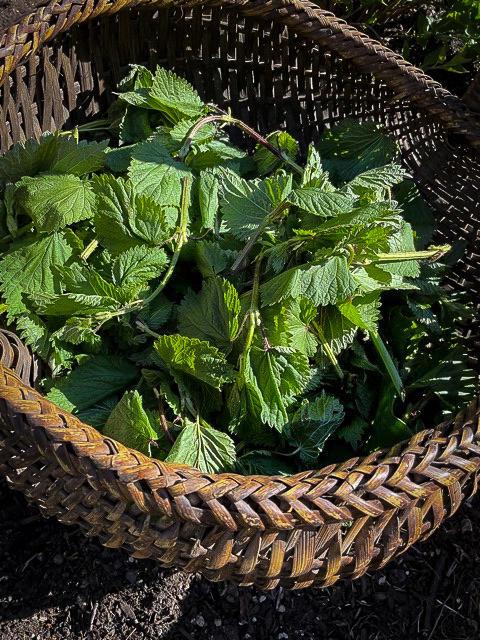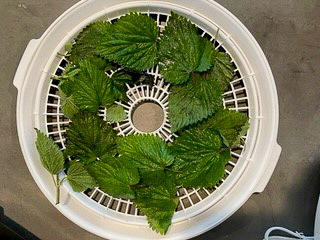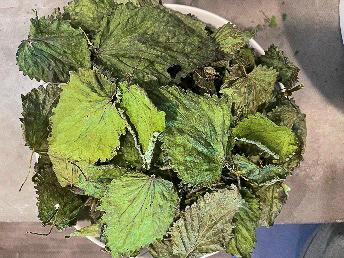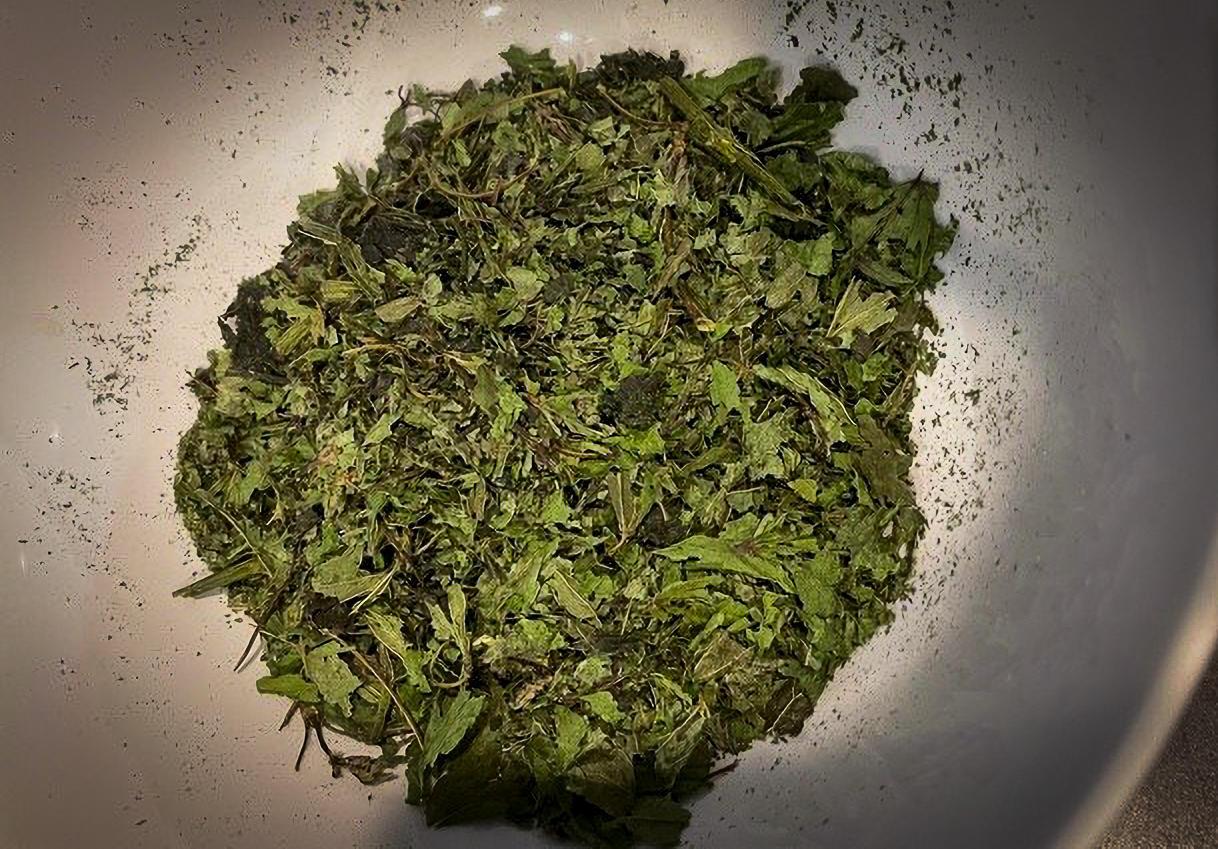Stinging nettle (Urtica dioica) is a delicious and nutritious food. But it’s also a plant that can sting and cause welts. With these tips, you can learn how to safely gather, prepare and preserve this wild edible.
Native Indigenous peoples have gathered stinging nettles since time immemorial. They can be used medicinally, ceremonially and as a highly nutritious food source. Roots, seeds, stems and young, tender leaves are all edible.
Mature fibrous stems have been used to make rope, cloth and fishing net. These skills, taught around the world for centuries, are now being revitalized.
Stinging nettles provide important habitat and food for wildlife. Butterflies such as the small tortoiseshell lay their eggs on the undersides of nettle leaves. Once the eggs hatch, the larvae feed on the leaves of the nettle plant.
Nettles also teach us. In many Indigenous cultures, the sting is considered a gracious reminder to always be aware — to pay attention to our surroundings.
Stinging nettle is often referred to as a perennial herb, and in some cultures, as a vegetable due to its high nutritional content. Like many vegetable greens, nettles are slightly bitter. A half-cup serving of blanched or cooked nettles is a good source of fiber that promotes good digestion. Nettles also contain calcium and manganese, which promote bone health. Lutein and zeaxanthin found in nettles contribute to better vision and eye health as we age.
Nettles are commonly used in soups, seasoning, teas and pesto. After proper preparation, substitute nettle leaves in almost any recipe that uses spinach or kale as an ingredient. You can preserve nettles for future use by freezing or drying them.
Growing nettles
Nettles are found wild in many places around the world, on moist forest floors and riverbanks. They are easy to grow in your backyard or in containers. Nettles reproduce via seed and rhizomes. You can buy nettle seed online or grow it from starts.
Gathering nettles carefully and respectfully
Caution: The tiny hairs found on stinging nettles, called trichomes, contain chemicals that produce a stinging sensation on the skin that can last for hours or cause blisters. Safe gathering practices can protect you from stings. Dry or blanch nettles before use to make them safe to eat.
Wear long sleeves, long pants and long rubber kitchen gloves when gathering nettles. Use sharp scissors to clip stems and leaves. Place nettles in a paper bag, basket or other breathable container.
Nettles are best to eat or preserve when tender. Gather them early in the morning in early spring, before the plant flowers. For less bitterness, choose leaves that are no larger than 3 inches wide from plants no taller than 3 feet. Clip right above the node at an angle so the stem does not become waterlogged. Once flowers appear, greens become tough, with a less desirable taste.
When gathering nettles, remember to take only what you need. Don’t dig them up and remove them from the soil. Reflect on the people and animals that come after you. This will allow the patch to grow strong.
Blanching nettles
Blanching cleans and softens food. This process destroys the tiny hairs, or trichomes, allowing you to safely eat nettles. Blanching also destroys enzymes that make vegetables deteriorate and keeps them from browning, becoming bitter or developing off flavors. Blanching keeps colors bright and makes it easier to hydrate food later. About 4 to 5 cups of fresh nettles will make about 1 cup blanched nettles.
Water blanching
Fill a kettle with enough water to cover the food. Bring the water to a rolling boil. Wearing gloves, gradually stir in the food, keeping the water boiling. Cover the kettle tightly and boil for 1½ to 2 minutes. Remove nettles and quickly place in an ice bath for 1 minute. Drain, place nettles between two towels and roll up tightly. Reuse the water to blanch again, adding more water as necessary.
Freezing nettles
Wear long sleeves and long rubber kitchen gloves.
- Rinse. Water blanch for 1½ to 2 minutes. Drain.
- Place leaves and stems in a single layer on a flat tray. Place in freezer. When frozen, place in airtight containers for freezer storage. Label and date.
- If freezing using ice cube trays, place blanched nettles in individual cubes ¾ full. Add water to cover. After cubes are frozen solid, remove them from the tray and place them in airtight freezer bags or containers. Label and date. Best to use within 1 year.
Source: Freezing Fruits and Vegetables, PNW 214, Oregon State University Extension.
Drying nettles
Wear long sleeves and long rubber kitchen gloves.
- Rinse. Drain.
- Spread in a single layer on a drying tray using tongs. Dry at 95° to 115° F until crisp.
- Store in airtight bags or containers in a dark and cool location. Label and date.
- Dried herbs are best to use within 6 months or placed in freezer up to 1 year.
Source: Drying Fruits and Vegetables, PNW 397, Oregon State University Extension.
Nettle recipes
Nettle tea
Resources
Engles, G., J. Brinckmann. Stinging Nettle, Urtica Dioica. 2016. American Botanical Council.
Janke, R., Farming a Few Acres of Herbs: Stinging Nettle. May 2004. Kansas State University.
Moerman, D., Native American Ethnobotany. 1998. Timber Press Inc.
Nordstrom Stastny, S., J. Garden-Robinson, Eating for Your Eye Health. August 2019. North Dakota State University.
Oregon State University Extension, home food safety and preservation publications.
U.S. Food and Drug Administration, Daily Value and Percent Daily Value: Changes on the New Nutrition and Supplement Facts Labels. March 2020.
Acknowledgment
Project supported by Oregon State University Moore Family Center for Whole Grain Foods, Nutrition and Preventive Health, Healthy Community Outreach Projects.





